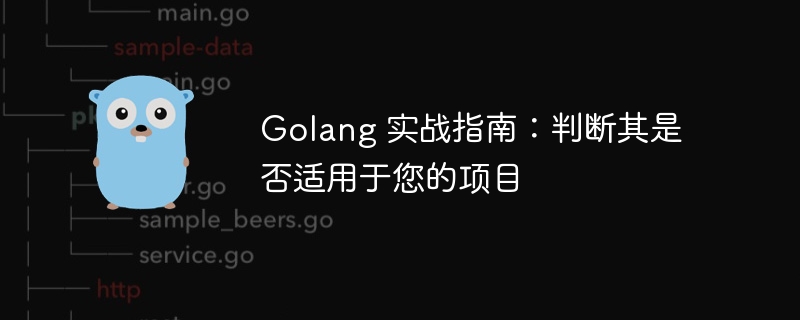
Go is suitable for high-concurrency, resource-intensive projects. Its advantages include high concurrency, static typing, high-speed compilation, and garbage collection; but the ecosystem is limited, pointers are complicated, and generics are lacking. In practice, Go is very suitable for use in web applications that need to handle high concurrent requests.

Go Practical Guide: Determining if it’s right for your project
Go, also known as Golang, is a programming language developed by Google open source programming language. Go has exploded in popularity over the past decade due to its simplicity, high concurrency, and fast compilation speeds. However, there are several factors to consider before applying Go to your project.
Evaluate the advantages of Go
Assessing Go’s Weaknesses
Practical Case
Let us consider using Go to develop a small web application that needs to handle high concurrent requests.
package main
import (
"fmt"
"net/http"
"sync"
)
var wg sync.WaitGroup
func main() {
http.HandleFunc("/", handleRequest)
http.ListenAndServe(":8080", nil)
}
func handleRequest(rw http.ResponseWriter, r *http.Request) {
fmt.Fprintf(rw, "Hello world!")
wg.Done()
}In this example, Go’s concurrency feature allows us to handle a large number of concurrent requests. wg.Done() The call tells WaitGroup that the coroutine has completed, and when all coroutines have completed, the main program will continue execution.
Conclusion
Go is a powerful programming language, especially suitable for high-concurrency, resource-intensive projects. Before deciding whether to use Go, consider its strengths and weaknesses and apply them to your project's needs. Go is an excellent choice for projects that require concurrency, type safety, and fast compilation.
The above is the detailed content of Golang Practical Guide: Determine whether it is suitable for your project. For more information, please follow other related articles on the PHP Chinese website!




